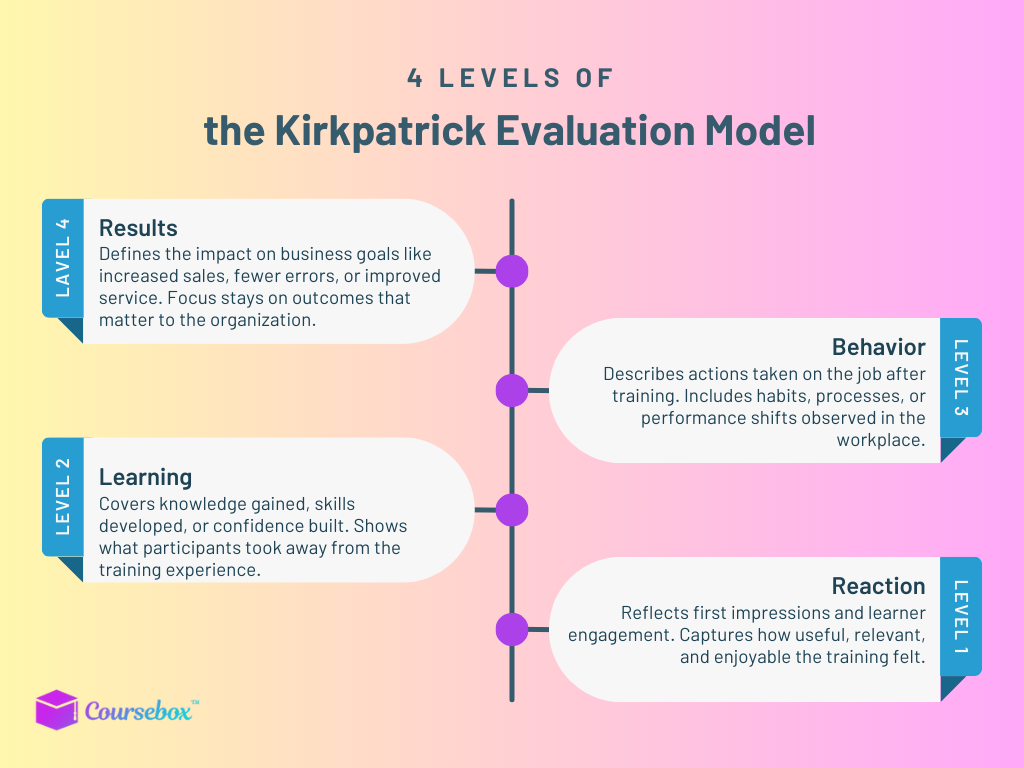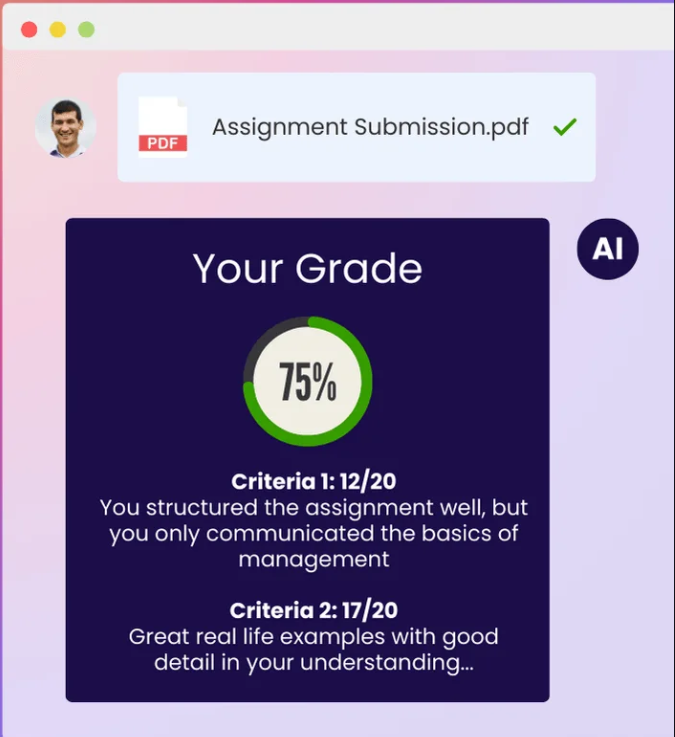Exploring Brinkerhoff's Success Case Method for Training Evaluation
Make your training programs more effective by evaluating them with Brinkerhoff's Success Case Method (SCM). Here is a detailed guide to get started quickly.
Make your training programs more effective by evaluating them with Brinkerhoff's Success Case Method (SCM). Here is a detailed guide to get started quickly.

Training programs are a vital investment for any organization seeking to enhance skills, productivity, and business outcomes. However, just like any investment, it’s important to evaluate whether these programs are truly effective. One innovative and insightful approach to training evaluation is Brinkerhoff’s Success Case Method (SCM).
SCM helps organizations identify and understand both the biggest successes and challenges in training by focusing on real stories from the most and least successful participants.

In this article, you will learn what Brinkerhoff's Success Case Method is, how it works, the step-by-step process to apply it, and the benefits it offers over other training evaluation methods. Let’s dive in.
Robert O. Brinkerhoff, Ed.D., is a renowned evaluation expert and professor who developed the Success Case Method in the early 2000s.
Instead of focusing on average results like many traditional evaluation models, Brinkerhoff’s SCM zeroes in on extreme cases. These include those who gained the most from a training program (success stories) and those who gained the least (failure stories). This approach uses storytelling and qualitative analysis to reveal what works, what doesn’t, and why.
Other training models, such as Kirkpatrick’s, often rely heavily on surveys and numeric scoring. Comparatively, SCM gives organizations a much clearer picture of training impact by examining individual experiences in depth. This helps uncover practical insights that are directly tied to business outcomes.

Brinkerhoff’s SCM focuses on understanding how a training program performs by examining its best and worst cases. It specifically focuses on those participants who have either succeeded exceptionally or struggled significantly in applying what they learned.
Instead of looking at average results, SCM zooms in on extreme examples to reveal what works, what doesn’t, and why. It starts by sending a brief survey to all training participants to identify these extreme cases based on how well they applied the training and the impact they achieved.
After gathering survey data, evaluators select a sample of the highest performers (success cases) and the lowest performers (failure cases) for in-depth interviews.
SCM answers key questions, such as: "When the program works, how well does it work?" and "If it doesn't, what are the reasons?" This focus on impact and actionable stories allows organizations to make informed improvements.
Below is a step-by-step guide to help you use SCM for evaluating your training efforts:

Begin by collaborating with stakeholders to clarify what success looks like for your specific training program. This is often done by developing an "Impact Model," which outlines the desired behaviors, results, and business outcomes the training is expected to influence.
Having clear success criteria helps focus the evaluation process and guides later data collection.
Craft a short, focused survey for all program participants. The survey’s goal is to identify who benefited the most and who struggled in applying the training.
Keep the questions practical and outcome-oriented, such as how participants used the training content and what results they achieved. Concise surveys encourage higher response rates and honest answers.
Analyze survey responses to identify “success cases” (top performers) and “failure cases” (those who derived little or no benefit). From these groups, select a manageable number (usually 2-6 per group) for detailed interviews.
This sampling prioritizes depth over breadth, allowing for richer exploration of key issues without overwhelming resources.
Use open-ended questions to guide interviews that reveal how participants applied the training, specific outcomes achieved, and the influences of their work environment. Ask for concrete examples and evidence to support their stories.
Additionally, explore the organizational supports or barriers that affect their success or failure. Remember, your goal is to capture detailed, authentic narratives that illuminate factors impacting training effectiveness.
Review survey data and interview transcripts to identify common success factors and recurring challenges. Compare findings from success and failure cases to understand what differentiates them.
Then, use this analysis to formulate actionable recommendations for improving the training design, delivery, or organizational support.
Finally, prepare a report or presentation that highlights compelling success stories, lessons learned, and opportunities for improvement. Sharing these narratives with stakeholders helps build understanding, motivation, and buy-in for recommended changes.
Include real examples to make the evaluation relatable and inspire continuous learning within the organization.
When evaluating training programs, several popular models exist, each with its own focus and strengths. Here is a quick overview of how Brinkerhoff’s Success Case Method compares with the CIPP model and Kirkpatrick’s model.

Brinkerhoff’s Success Case Method and the CIPP model both provide valuable training evaluation frameworks, but differ significantly in focus and approach.
SCM targets the extremes by identifying and deeply analyzing the most and least successful training participants to reveal actionable success stories and obstacles. This qualitative, story-based approach delivers practical insights about what works and what doesn’t in real-world settings.
In contrast, the CIPP model offers a comprehensive and systematic framework covering four evaluation components. These include Context (needs and environment), Input (resources and program design), Process (implementation and delivery), and Product (outcomes and results). CIPP emphasizes continuous improvement by collecting and analyzing data across all stages of a program’s lifecycle.
SCM quickly pinpoints factors behind success or failure through focused interviews and surveys. Meanwhile, CIPP provides a thorough, ongoing, multi-dimensional evaluation.

Kirkpatrick’s model is known for its four-level structure: Reaction (learner satisfaction), Learning (knowledge acquisition), Behavior (on-the-job application), and Results (business impact). It utilizes surveys, tests, and performance data to quantify the effectiveness of training across these levels.
SCM, by contrast, focuses on identifying the outliers, the top and bottom performers, and collecting rich, qualitative stories that uncover why training succeeded or failed for those individuals. Instead of averaging feedback or ratings, SCM captures detailed examples that explain the real impact and barriers in the training application. This narrative-driven approach provides deeper context behind the numbers Kirkpatrick’s model produces.
Brinkerhoff’s SCM offers a fresh and insightful way to evaluate training effectiveness by sharing the true stories of those who succeed and those who face challenges. Its clear focus on business impact and real learner experiences provides practical lessons that organizations can use to improve future programs.
Integrating the SCM with AI-powered tools, such as Coursebox, can streamline and enhance the training evaluation process. Coursebox’s smart platform automates many of the time-consuming tasks involved in SCM, such as survey distribution, data collection, and organizing participant responses. This makes it easier to draw meaningful conclusions from success and failure stories.
Moreover, Coursebox’s interactive features like automated grading and real-time learner feedback ensure continuous monitoring of training effectiveness. This complements SCM’s deep dive interviews with ongoing data insights.

Unlock faster, more actionable evaluation results with Coursebox. Sign up for free now to learn more about Coursebox’s integration with SCM.
The Brinkerhoff's Success Case Method is a training evaluation approach that focuses on identifying the most and least successful participants in a program. It involves surveying all participants and then conducting in-depth interviews with those extreme cases to understand what contributed to their success or failure. This method uses real stories to reveal practical factors that influence training effectiveness, providing actionable insights beyond average results.
Unlike traditional models that often focus on overall averages or numerical scores, SCM zooms in on outliers, the highest and lowest performers. This qualitative, story-driven approach helps uncover detailed reasons behind successes and challenges, offering richer, practical information that guides improvements.
To apply SCM for training evaluation, you need to begin by defining what success looks like for the training program. Then, design a concise survey to identify participants who had the most and least success applying the training. Selected participants are then interviewed with open-ended questions to gather detailed stories about their experiences and outcomes. Finally, the evaluation team analyzes these insights to identify patterns and make recommendations, which are then shared with stakeholders to inform future training improvements.
Yes, SCM works well alongside models like Kirkpatrick’s or CIPP by adding qualitative depth to quantitative data. While Kirkpatrick measures overall reactions, learning, behavior change, and results, SCM provides rich stories explaining why certain participants succeeded or struggled.
Coursebox’s AI-powered platform simplifies many SCM tasks. It can automate survey distribution, response collection, and data organization efficiently. It also supports in-depth learner feedback and real-time grading, making it easier to quickly identify success and failure cases.
